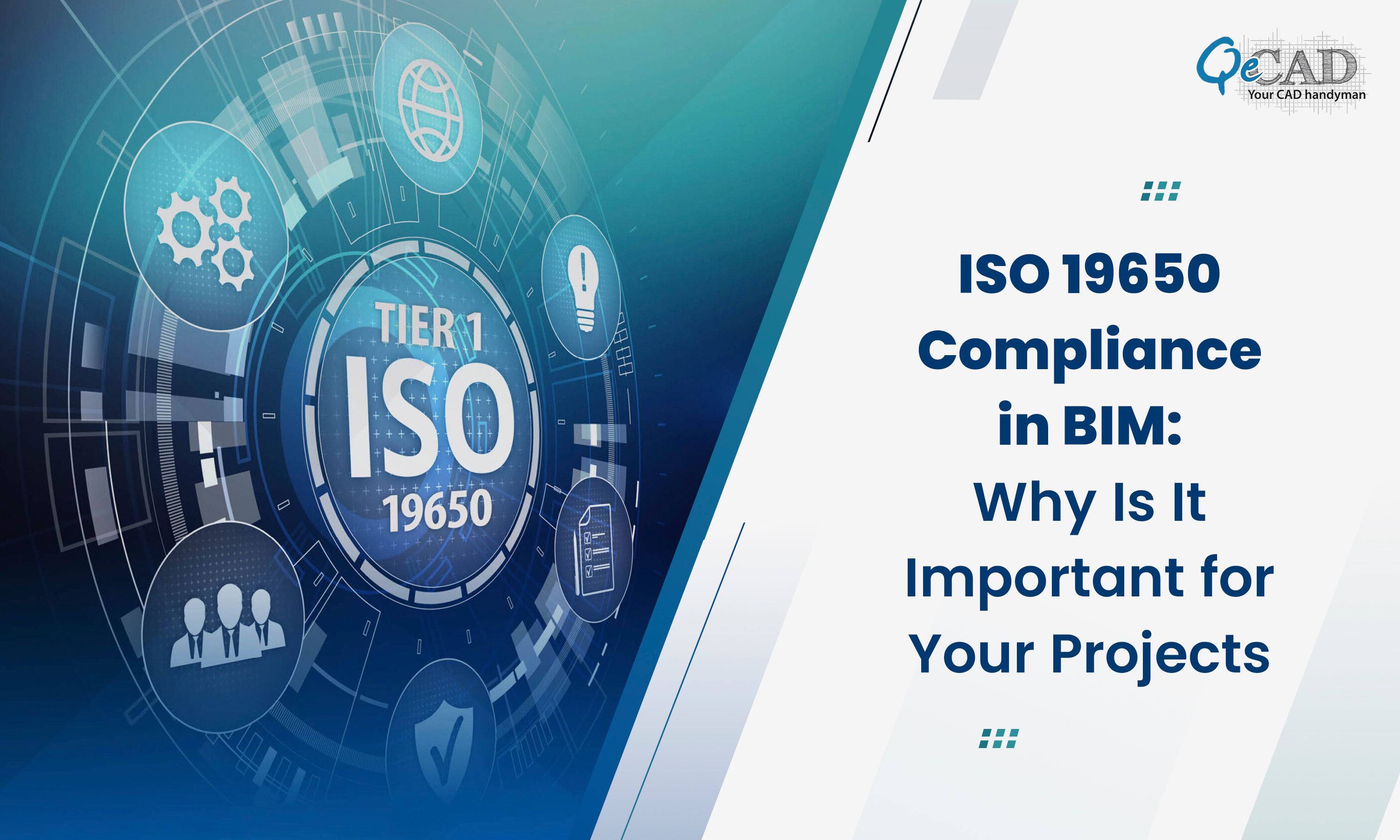
In the modern architecture and construction industry, digital collaboration is not an option but is a must. Tech tools like BIM has reshaped the design, coordination and delivery processes in the AEC projects. However, to ensure the consistency, efficiency and interoperability across different teams, adhering to the international standards like ISO 19650 is critical.
Understanding the ISO 19650 Series and Its Concepts and Principles
ISO 19650 is a globally recognized standard for handling information across the lifecycle of built assets through BIM. It builds upon the UK’s BS 1192 and PAS 1192 standards and provides a structured approach to the information management.
Key concepts and principles includes:
- Common Data Environment (CDE): A central repository where all of the project information is stored, managed and shared among the stakeholders.
- Information Requirements: Clearly defined requirements for what information needs to be produced, when and in what format.
- Collaborative Working: Encouraging the transparency, coordination and communication across all project participants irrespective of their roles and locations.
- Structured Information Delivery: Ensuring that the data is consistent, traceable and aligned with the project milestones.
- Lifecycle Focus: Managing information throughout the lifecycle covering design, construction, operations and even the maintenance.
These principles ensures that the projects are delivered efficiently with minimal errors and that the data remains useful throughout the building’s lifecycle.
ISO 19650 and Its Importance?
ISO 19650 provides an international framework for handling information across all stages of a built asset’s lifecycle through BIM. It provides a structured framework for information management, ensuring that all the stakeholders right from the architects to the contractors are aligned.
The importance of ISO 19650 lies in its capacity to:
- Standardize the workflows across the teams and projects.
- Improve the collaboration by establishing clear information exchange protocols.
- Reduce the errors, omissions as well as the miscommunication that can cause any delays or even the cost overruns.
For firms offering the BIM Outsourcing Services, complying with ISO 19650 ensures that their deliverables are structured, reliable and easily integrated into the client workflows.
Implementing ISO 19650 Standards: A Guide for AEC Firms
Implementing ISO 19650 requires a systematic approach:
- Establish Information Management Protocols
Create a Common Data Environment (CDE) to consolidate all project data in a single, accessible location. Define the clear naming conventions, version control and access rights. - Train Your Team
Educate the staff and subcontractors on ISO 19650 requirements, workflows and tools. Consistent understanding across the team is the key to compliance. - Develop a Project Information Plan (PIP)
The PIP outlines how the information will be produced, shared and approved throughout the project’s lifecycle. It acts as a roadmap for the compliance. - Leverage BIM Software Effectively
Platforms like Revit and other BIM solutions should be configured to support the ISO 19650-compliant workflows. Automation tools can help to enforce the standards and track the compliance. - Continuous Monitoring and Review
Regular audits and reviews help to ensure that all the teams adhere to the standards and deviations are addressed promptly.
How ISO 19650 Integrates with International BIM Standards?
ISO 19650 is designed to harmonize the BIM processes across countries and organizations. It aligns with the other international BIM standards, including:
- ISO 16739 (IFC): Ensures the interoperability of BIM data formats.
- PAS 1192 series (UK): Forms the foundation for ISO 19650, standardizing workflows and information management.
- National BIM Standards (US, Europe, Australia): ISO 19650 integrates with the local standards thereby making it easier for the multinational projects to maintain the consistency.
This global alignment allows the firms offering the Revit BIM Services to deliver the standardized and internationally compliant data thereby enabling the seamless collaboration across borders and improving the project outcomes.
Advantages of Leveraging ISO 19650 Standards
Adhering to ISO 19650 brings numerous benefits:
- Enhanced Collaboration: A standardized approach ensures that all the stakeholders are on the same page hence reducing the misunderstandings.
- Improved Efficiency: Streamlined workflows minimizes the redundant work and accelerates the decision-making.
- Better Risk Management: Accurate and consistent information reduces the errors and costly reworks.
- Compliance and Reputation: Following internationally recognized standards boosts the credibility with clients and regulatory authorities.
- Seamless Integration: Facilitates coordination between multiple firms, especially in the outsourced BIM projects.
How ISO 19650 Affects Project Lifecycle Management?
ISO 19650 impacts every stage of a project:
- Design Stage: Ensures that the design data is structured, verifiable and easily shareable.
- Construction Stage: Streamlines the communication between the contractors, subcontractors and engineers.
- Operation and Maintenance Stage: Provides a reliable dataset for facility management and even for the future renovations or expansions.
In essence, ISO 19650 transforms the BIM from a design tool into a comprehensive framework for managing the project information throughout its entire lifecycle.
Key Challenges in Implementing ISO 19650
Despite its benefits, implementing ISO 19650 comes with challenges:
- Initial Investment: Setting up compliant systems and training teams requires time and finances.
- Change Management: Shifting from the traditional workflows to standardized processes can meet the resistance.
- Technical Complexity: Ensuring that all BIM platforms including the Revit BIM Services, are configured for the compliance can be technically demanding.
- Consistency Across Teams: Ensuring that all the internal and external collaborators adhere to the standard can be challenging especially in the large set of projects.
With proper planning, training and commitment these challenges can be effectively managed.
Conclusion
ISO 19650 is more than just a compliance requirement; it’s a strategic approach to managing the project information efficiently, reducing the risks and enhancing the collaboration. For the firms offering BIM Services, ISO 19650 compliance is not just a mark of quality—it’s a necessity for delivering the world-class projects.
By embracing ISO 19650 and aligning with the global BIM standards, your firm ensures that the workflows are standardized, data is reliable and the projects can be executed seamlessly across the borders.
This standard sets the foundation for successful, future-ready projects in today’s interconnected AEC industry.
